What has happened to fashion? There was a day when well-dressed and even not-so-wealthy women looked to the latest in fashion to get ideas on how to update and add to their wardrobes to make them look prettier and feel good in and about themselves in their new clothes. This sounds a little Emperor’s-New-Clothes-esque, that women would follow in lock-step the fashion of the day, but there was a lot more to it than simply following someone’s word on what was good and what wasn’t.

For one thing, the edict was issued by people in the know. They had experience and taste and knowledge about what made good fashion and they weeded out the junk. But like all power, and don’t kid yourself, those magazine and fashion editors had a huge amount of power, it corrupts and as the 1980s started, there were the grand and esteemed designers, and then the wannabes. One hardly heard a thing from the crazies because the venerated designers like Yves St. Laurent, Christian LaCroix, Valentino, Armani, Thierry Mugler, Claude Montana, Gianni Versace, Franco Ferre, and Emanual Ungaro were all featured and the crazies were edited out as they should have been. All these designers, as innovative as they were, above all, created clothing that was flattering, beautiful, and at the least made an effort at making the customer look better than previous outfits or garments.
I was raised in the age of the Edict by Editor, and even today, I really don’t see that they were such horrendous Cruella’s as depicted in “The Devil Wears Prada.” I think that it is an all too easily used and trite term. To a certain extent, there’s a persona that an editor has to maintain so as to remain aloof and more unapproachable so that she appears a better judge and jury of fashion. Even today, if I’m looking for an opinion on fashion, I will go to someone like Anna Wintour, or Cathy Horyn, Suzy Menkes, and Glenda Bailey (although she’s in a bit of a consultant position rather than an editor at Bazaar). Fashion editors do have their place in the fashion world, and always will. We can not help but listen to the musings and comments from the experienced in fashion. And although the influencers and Instagrammers seem to have the biggest ear right now, it will pass. It will pass because their comments and edits on fashion are like the wise words of Andy Warhol: “In the future, everybody will be world-famous for fifteen minutes!” And the influencers (those with thousands of followers) and Instagrammers are certainly in that category. With education, life experiences, and a certain editorial nature, the real fashion editors will stay and hopefully will once again edit the wannabes and the crazies out of the fashion world.

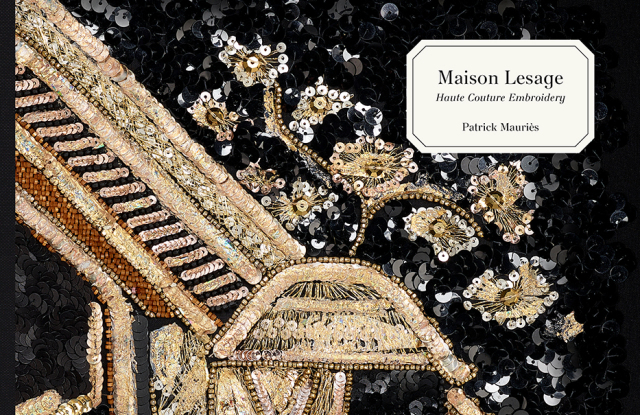
Although these look crazy now, at the time they were the height of fashion. Toward the end of the 80s, there did seem to be an awful lot of glitzy and glamour as one season tried to outdo the other. The House of Lesage, a famous beading and ornamental Maison in Paris was in its heyday and couldn’t keep enough employees trying to bead gowns and anything that held still long enough!
Fashion always resists the movement before the new fashion trend. This is the natural life of fashion.
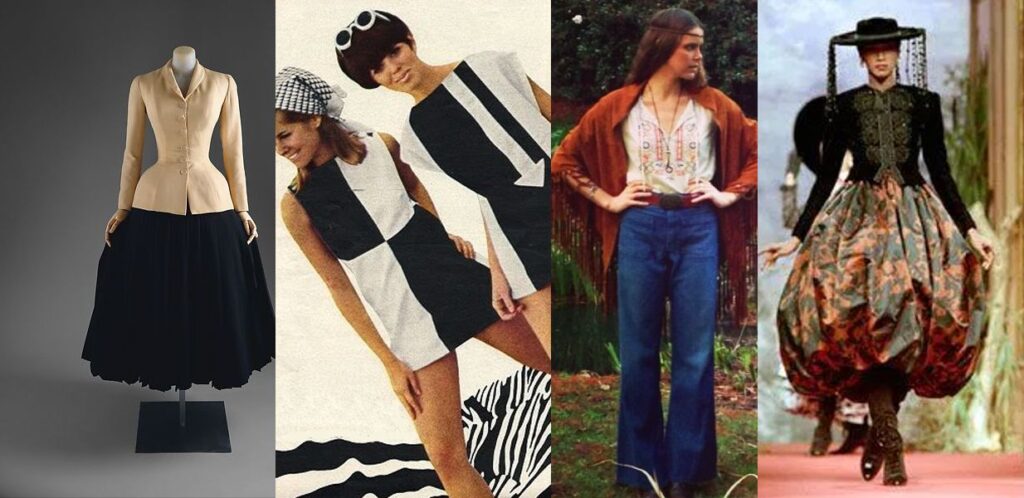
Say what you will about these looks, they all reflect what came before them. Staring with the Dior “Bar Suit” was a reaction of the strict ration-war wear during World War II, then moving to an even happier look but straighter more “mod” than the contrived Dior silhouette, was the Mod Look of the 60s, then to the looser freer look of the 70s, a bohemian-hippie type look and ending with the complete antithesis of hippie closeness, the glitzy and glamour of the 80s. So what should come next? The antithesis of the 80s in 1992 at the first who that Marc Jacobs did for the House of Perry Ellis.
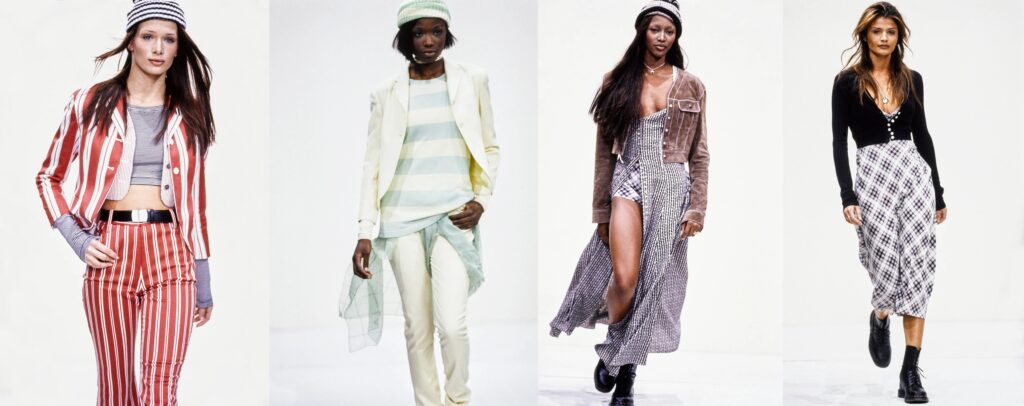
And this looks positively tame compared to what this style turned into.

What really happened, is that a lot of the clothing manufacturing went offshore. As each collection was bid for, the designers’ rep would bargain for cheaper and cheaper prices. The manufacturer said, “Hey, you want ill-fitting, torn, cheaply made, un-durable clothing? Yeah, we can do that for a lot cheaper,” and so it goes. Each successive job got cheaper and cheaper. The clothes became cheaper and cheaper, the fabric became cheaper and cheaper, and the yarns that were spun to make the fabric to make the garment became cheaper and cheaper. Pretty soon the clothes began to last for a shorter and shorter time. But the retailer didn’t care, cause what the retailer did was replace the 2 seasons of fashion shows per year, for every 6 weeks new styles would come in – so you would have new styles in the stores every 3 months. Then they changed that to every 2 months, now it’s almost every 3 to 4 weeks. This is all to feed the ever-hungry consumer wanting more clothes.
So what did all this teach the consumer?
- More is better
- Too much is better
- Cheap is good
- Durability is bad
- The shopping experience is more important than the item purchased.
- You can’t make this cheaper
- You can’t make this — period
- Sewing is hard, but 3rd-world countries with minimal education can make it
- You can recycle this clothing
- We don’t need fashion editors
- Following Instagramers who have hundreds of thousands of followers is better than editors
- Following influencers is better than following fashion editors.
- Workers are paid a living wage (we think, but we’re not sure because we go through a broker to hire the manufacturer of our clothing so we can’t be blamed if we use slave labor.?)
And these are the lies that the clothing consumer has fallen for. These are filled with fallacy and more than anything some of these flies in the face of real reason, such as you can recycle the clothing. No one wants this cheap clothing and it ends up in bales of clothing that is shipped back to 3rd world countries where they go through it looking for some gem in the middle of a bale of garbage. Most of the time it’s shredded, used as stuffing, or burned.
In addition to the false narratives that the clothing retailer has perpetrated upon the consumer, there is the designer who wants to make a difference. She/he goes out into the marketplace with a new plan to create a sustainable, earth-friendly, and durable product, and makes a compelling presentation to the financiers, backers, and bankers. The first thing the financial people say is what is your profit-margin percentage? And it’s less than the current system, and the financiers don’t even say maybe, do not pass Go, do not collect $2,000 or nada. They are summarily laughed out of the room and escorted to the nuthouse where ethical, sustainable, and durable designers are collecting.
So even if the designers want to make a change pre-2019, the marketplace simply wouldn’t allow it by saying, “You’re not profitable enough to compete with the systems already in place!”
And then came Covid-19.
Then we saw headlines like:
Shoppers Used to Have Nearly Endless Options, Then Came Covid-19
H&M’s March Sales Fall 49% Amid Covid-19 Outbreak
Protecting Workers’ Rights Is Harder Than Ever in a Pandemic
How 2020 Changed the World’s Biggest Fashion Market
Will Fashion Ever Be Good for the World? Its Future May Depend on It.
Whoa – what’s going on here? Is the old way of manufacturing clothing faltering? …failing? …falling away? …even dying? Is that stalwart greedy use of slave labor to manufacture clothing going away? Well, the truth is that when you use slave labor, one of the (many) things missing is that they don’t have any legal protection, much less any representation for any rights they may have. As a matter of fact, they have no rights, so they certainly aren’t protected. And then what happens when that market is drying up and going away? What happens to those workers? Do they stand around waiting for the market to come back? Do they march and riot for their jobs back? No, none of that happens. They quietly go search for other work. What happens to the manufacturers who use slave labor? …the companies that hire such workers? What sort of longevity do they have? What sort of recourse do they have when their products are not accepted by the retailer? …when the products are shipped back to the manufacturer who doesn’t know what to do with them?
The system falters and dies away. And believe it or not, it only took about 2 seasons to do it. But we’ve had about 4 seasons so it’s good and gone. Yes, there’s still some of it left, because there are companies that can’t live without this source of labor. But the truth is that the old system of clothing manufacturing is dying and if it isn’t already will be dead soon. For one thing, too many consumers are aware of the cost of cheap clothing and don’t want it. The designers don’t want it. The manufacturers don’t really want it (they would have to gear back up again, without the legal protection of job security, which makes their jobs a gamble at best). Now, the financiers, backers, and bankers may love it, but the designers, manufacturers, and consumers have the upper hand here, and after this heinous form of manufacturing has been decimated and destroyed, the person(s) who think they can bring it back or want to bring it back from the dead, would and should be raked over the coals to convince them that not only no, but HELL NO!
So change is coming. And the change won’t only be in the way clothes are manufactured, but also in the style of clothing. We haven’t seen a fashion change for almost 30 years. That the lifetime of an entire generation. There is a group of people out there today that are having children, who are purchasing their children the same things they were purchased at kids. That’s too long without a change, and it’s brought a whole lot of bad fashion upon this world, that is in desperate need of change.
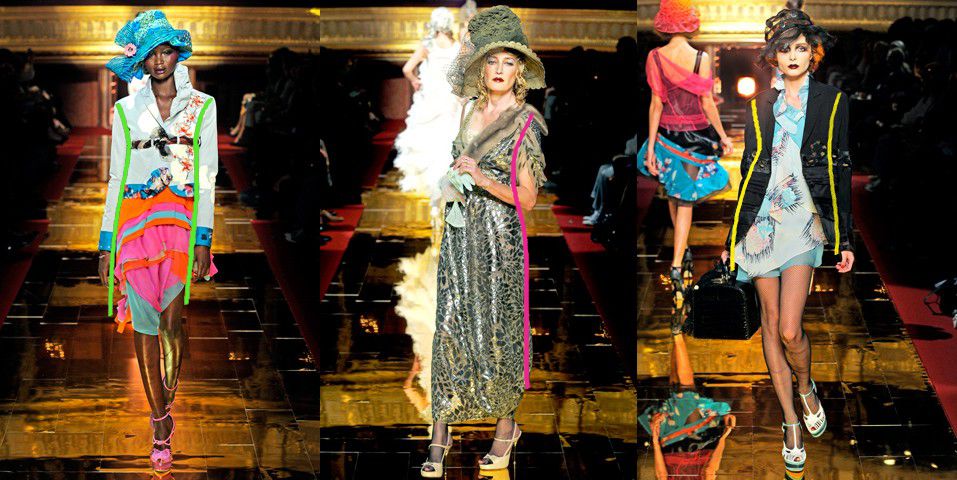
We might have seen a change in 2011 when John Galliano did his Spring/Summer 2011 RTW collection. It was filled with feminine figures, ruffles, colors, happiness, and accentuation on a raised waistline. What could be the anti-thesis of Grunge, depressing sad, drab colors, ill-fitting messy clothing, ripped and torn old-looking clothing. Fitted, flattering, frolicking and fun clothing was such an immediate and welcomed change, it was fun to behold.
Then came the calamity of drug use. It was the end of Galliano’s place on the world stage — for a while. After drying out and working through his issues (some of which weren’t his fault, but more a symptom of the condition of working for a major Maison in Paris), he’s come back. I still look for beautiful things to come from Galliano, but he’s not quite there yet. But unfortunately, his drug-induced outburst took the attention away from that Spring 2012 fabulous show.
In the meantime, there are other designers who have wanted to rebel against the illicit manufacturing of clothing and are making their mark in the fashion world. Designers like Prabal Gurung, Zac Posen, Jason Wu, The Row, Rodarte and old masters like Armani Privé, Chanel, Ellie Saab, and Giambattista Valli are all keen on making sustainable, durable clothing. Some of them have never given it up making sustainable, beautiful, attractive clothing during the Grunge era (like Armani). The saying goes, that Armani makes the clothes for the wife and Versace for the mistress. But for some, they have known only one way to manufacture clothing in their lifetimes.
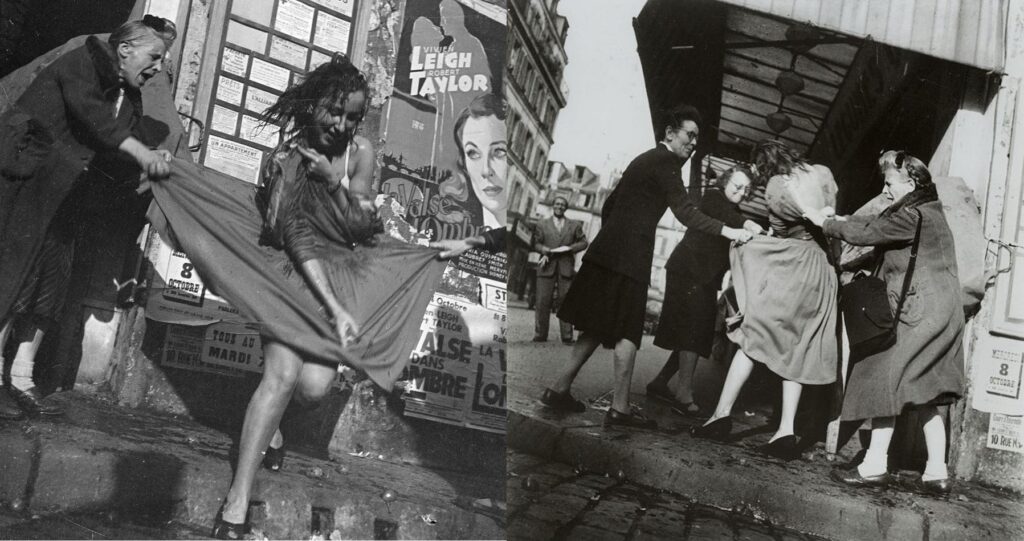
That’s all about to change. And considering that we haven’t had a change in 30 years, it’s really going to be a barn-burner of a change….sort of like what Christian Dior did in 1947 with his Bar Suit!

I hope you are right.
Eventually, time will demand change. The only thing preventing the change up to now was the stranglehold that the financiers, bankers, and backers had on the industry.
Enter…COVID-19. Because this caused turmoil in buying clothes at the frenetic pace pre-Covid, then suddenly clothes weren’t selling. When the new shipments came in, they were refused, and sent back to manufacturers or allowed to sit on the loading dock, but were not paid for. The manufacturers didn’t know what to do with the returned orders, and with no new orders, are stuck with a bunch of clothes. Slave labor doesn’t have any legal representation or protection against job loss so they simply disperse looking elsewhere for jobs. The whole clothing manufacturing system breaks down. It dissolves.
As a result, when the business picks back up again, that whole system has to be created from anew. Now seriously (and this is what I tell students graduating from college with their design degree), who wants the PR of starting up a slave labor clothing manufacturing company….again. That kind of PR is toxic.
Whenever there’s a shakeup like this, things change and they change rapidly. Entrepreneurs love this kind of shakeup, and hopefully, there are enough designer-entrepreneurs who will force the industry to change ways to create a more sustainable and durable process of clothing manufacturing. I believe there is cause the younger designers (Zac Posen, Jason Wu are two that come to mind), are hell-bent on creating sustainable, durable and earth-friendly clothing.
When women want to improve their social life, they buy new clothing. Nothing says “NEW” like the latest “fashion”. Once upon a time, a fashion garment could be washed/cleaned maybe five or six times. Today, fashion garments can’t stand two trips through the washing machine.
Style, on the other hand, lasts decades. Chanel jackets have been around a hundred years.
The strident, contentious political situation today makes particularly alluring clothing on women rather a bit of a no-no. So, women looking to improve their social life buy ten or twenty fashion garments rather than two or three style garments.
Social custom dictates fashion, and Fashion, far more than any designer or editor. When I alter wretched looking clothing for a woman who bought online, I’ve had women pull the pins out of the garment before I turn on the sewing machine to reduce the accent on the feminine silhouette to more or less a Mother Hubbard look.
Oh, you are preachin’ to the choir on this one…I can see those “wretched” clothing with seams allowances of about 3 yarns and it’s a wonder it made it to the store in one piece much less on and off the hanger. And to alter – uh- like altering air!
But some women in places of authority or leadership have to look “hip” or modern but not weird. They have to look level-headed, but not frumpy and have found that there are one of two looks that they can do that with, and that’s what they stick to. That means purchasing from a certain retailer, designer, or company to get “that look”. Some are even lucky enough to have found someone who can alter or make clothes for them within that “look” parameter. They’re the lucky ones cause they can have what they want/need maybe even with some comfort.
Hear Hear on this post.
I detest shopping. Everything is ugly, unsophisticated, boring and cheap. There is a resurgence in home sewing, and I think some of what you have posted maybe the impetus for this trend. It came to me when reading this post, that even if I buy all the necessary materials, once my garment is finished, it fits and is well made. Guess what I wear it over and over again for years. That’s sustainable.
You know that’s right. The price might be a little higher today, but when you wear it year after year, washing after washing and it’s still one of your favorites, then that’s money well spent. There’s something that completely drives all this away, and it’s when the consumer sees a low price and thinks that they are going to get something that lasts, but it never does. And the fact that we have to keep purchasing it over and over and over, is actually much more expensive and way more wasteful.
Enjoyed this article look forward to the next. I have been dusting off my clothes sewing skills this last year because even if I buy from a well know company like Talbots the style is there but all made overseas and the material and construction is less and less each year. I only buy when on clearance because their prices don’t reflect the quality that should be there to warranty that price.
Yeah – I know it’s a shame when you find a style that suits, but the quality doesn’t match the price. The idea of wearing flattering clothing that is also comfortable and affordable is almost a lost wish for most people. The consumer is convinced that if it’s flattering then it has to be uncomfortable. This is what drove me to sewing to begin with. I was looking for a pretty red dress for an event in my size, my style, flattering and comfortable – you would have thought I was asking for the Moon! I thought it couldn’t be that hard to make a red dress!
If I could pass on one thing in my life it would be that you CAN have flattering, stylish clothing without sacrificing your entire savings or your comfort. If the consumer demanded that, then they would get it! If the consumer had another place to get clothing – like sewing their own clothing, then the marketplace would respond.